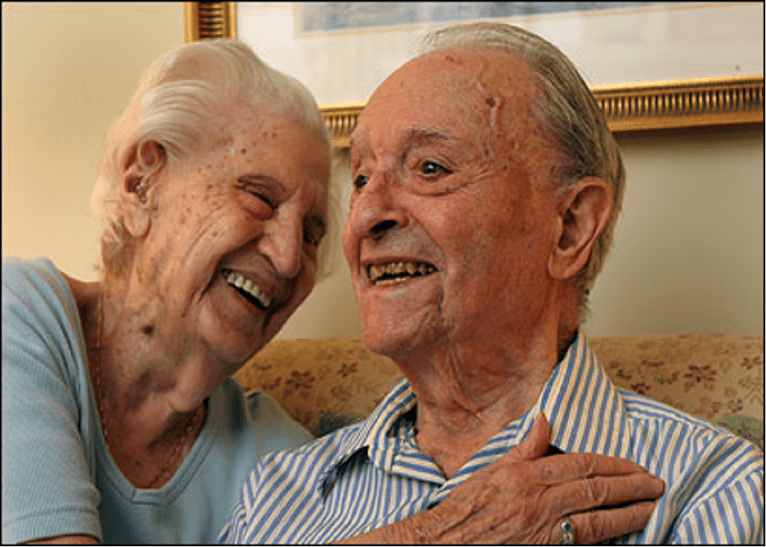It has always struck me that everyone agrees that intimacy is a central part of any good relationship, but it's also true to say that a definition of intimacy can be nearly as elusive as the experience itself.
Lots of us have romantic ideas about intimacy and imagine it to be about walks on a tropical beach, dinners by candlelit and sex in a five-star hotel. These are great pleasures and should be savoured. But is that right? Is that intimacy and if it is, how on earth are we going to keep being intimate once the honeymoon is over and life's challenging realities come knocking?
Over the years, I've lectured and workshopped this issue with hundreds of people. Some of them therapists but many of them not. I've worked with social workers, lawyers, family support workers and even health visitors and I've showed the pictures below or similar ones over and over again. In the pictures you can see two couples. The first a young, attractive couple in the middle of sexual pleasure. They are both naked and he holds her face as she throws back her head allowing him to kiss and fondle her neck. The neck being a place which generally we don't offer up with such abandon - trust is needed to let someone touch and hold you in this vulnerable place.
In every group, in every classroom from Belfast to Birmingham, there has been a resounding agreement that the older couple are the truly intimate ones.


Why might this be so?
One can see the passionate engagement of the younger, sexual couple but it seems that most people just have a sense that the older couple are the truly intimate ones. Firstly, the most obvious thing about the older couple is that they are sharing something and the that the thing they are sharing is external to themselves. I think she's been the leader, that is she's just directed his attention to something and is now taking pleasure in seeing his response. I think you'll agree there's a feeling that a moment earlier they were looking in the same direction. And this experience of paying attention to something jointly is something that researchers of human development have identified as being at the heart of the human experience. This shared attention occurs when one person alerts another to an object or an event by means of eye-gazing, pointing or other verbal or non-verbal signals.
In early childhood, this experience between an infant and their carer provides children with information about their environment which helps them learn, take pleasure and share with another. This joint attention experience is essential to a child's socio-emotional development helping them to develop the ability to take part in normal relationships.
The second thing that makes this couple seem really intimate is their wrinkles! In their ageing skins we see a life lived and the feeling that this couple have a deep shared history which has led to a shared sensibility about the world outside.
Though it is certainly difficult to define intimacy, we can probably agree that trust is absolutely essential -couples who are intimate trust each other enough to show their vulnerability and feel their openness. But most importantly perhaps is the sense that deep intimacy develops from a shared historical narrative of experience - the older couple are so compellingly more intimate than the younger, because the viewer senses that they have a shared set of lived experiences which informs the way they see the world and the way in which they share that view.
Is then the exciting experience of falling in love merely a chimera? Or perhaps a misunderstanding, where sexual passion and closeness are confused with intimacy? I think intimacy is not a fixed state but rather a journey between two people, which changes, deepens, shallows and fluctuates as the external and internal world and life circumstances shift and change too. The older couple in the picture are at the end of this journey and though we may fantasise that that they are now fixed in a contented intimate state, this is no more real than the fleeting intimacy of a young couple in passionate embrace.
Intimacy therefore is something that comes and goes. It is no more a permanent state than any other human pleasure.
Watch our interview with Susanna here
Susanna Abse is a psychoanalytic psychotherapist and the author of Tell Me the Truth About Love

